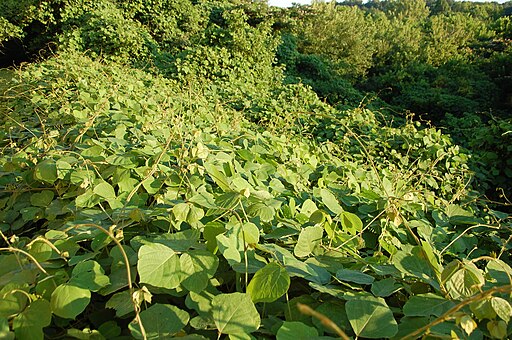Kudzu was introduced in the South to prevent erosion and provide feed for cattle. With no natural enemies, it has spread; and become difficult to eradicate.
 |
| By Bubba73 (Jud McCranie) (Own work) [CC BY-SA 3.0 (http://creativecommons.org/licenses/by-sa/3.0)], via Wikimedia Commons |
Fire Ants were introduced in the 1930's in Mobile, AL. They have since spread westward and much further North than was thought they could live. With global warming and their vigor of spreading, where weather will stop them is not known.
They look like ordinary ants. Their sting produces a large pustule filled welt. They cause a great deal of damage to farm equipment, animals, and electrical equipment.
They look like ordinary ants. Their sting produces a large pustule filled welt. They cause a great deal of damage to farm equipment, animals, and electrical equipment.
 |
| By NatalieK (Own work) [CC BY-SA 3.0 (http://creativecommons.org/licenses/by-sa/3.0) or GFDL (http://www.gnu.org/copyleft/fdl.html)], via Wikimedia Commons |



This was great to read Ann, Much I didn't know about. I guess we learn something new each day.
ReplyDeleteHave a nice day.
Yvonne.
Kudzu at least looks pretty along those long stretches of highway. But Fire Ants - eh - can't think of anything positive to say about them.
ReplyDelete~Visiting from AtoZ
Hope no fire ants comes near us. I guess there is a perk to snow
ReplyDeleteYou have a very eclectic A-z and some great pictures. I have a cousin who lives in Georgia and I have always wanted to visit. I love the old houses.
ReplyDeleteKudzu is a disaster. I was bitten by fire ants while visiting my sister and it really hurt.
ReplyDeletehandsome one.
ReplyDeleteI wouldn't mind the Kudzu so much, but Fire Ants? Yikes! Hopefully, they won't be coming as far north as Canada.
ReplyDelete